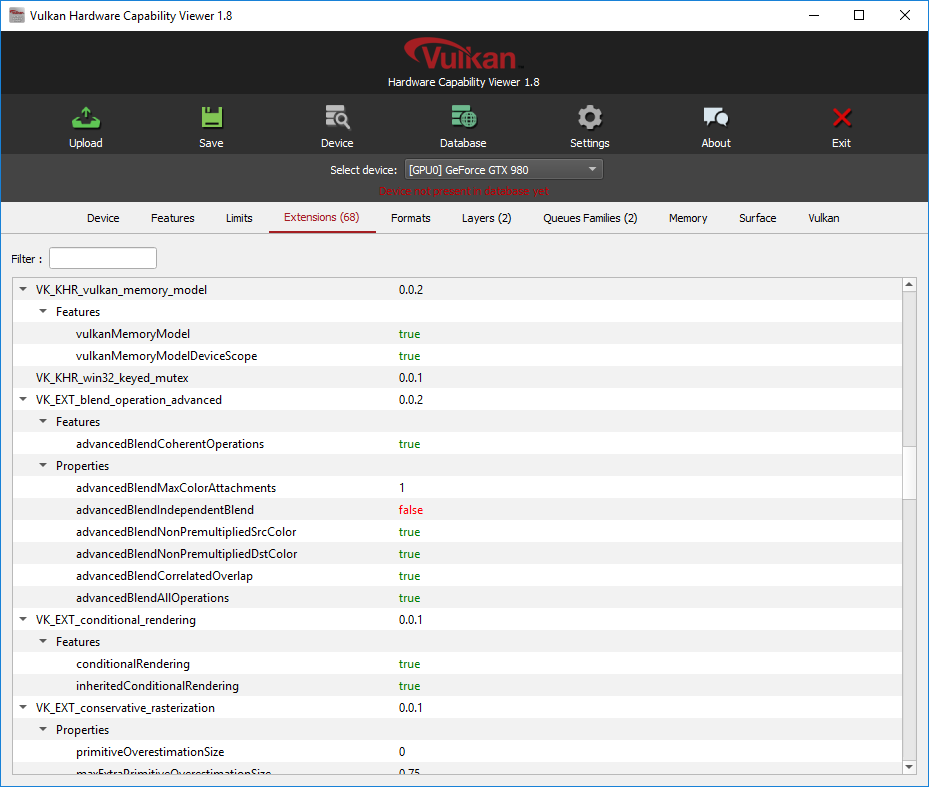Vulkan Hardware Capability Viewer 1.92 released
Version 1.92 of the Vulkan Hardware Capability Viewer is now available for all platforms (Windows, Linux, Android).
This version fully supports Vulkan 1.1 and adds support for reading additional features and properties for the following extensions:
- VK_KHR_shader_float16_int8
- VK_KHR_shader_float_controls
- VK_EXT_fragment_density_map
You can download the new version from https://vulkan.gpuinfo.org/download.php.
Updates to the Vulkan Hardware database and the Hardware Capability Viewer
Vulkan Hardware Capability Viewer 1.9 released
Version 1.9 of the Vulkan Hardware Capability Viewer is now available for all platforms (Windows, Linux, Android).
This version fully supports Vulkan 1.1 and adds support for reading additional features and properties for the following extensions:
- VK_KHR_driver_properties
- VK_KHR_shader_atomic_int64
- VK_NVX_raytracing
- VK_NV_mesh_shader
- VK_NV_shading_rate_image
- VK_NV_compute_shader_derivatives
- VK_AMD_shader_core_properties
You can download the new version from https://vulkan.gpuinfo.org/download.php.
Vulkan Hardware Capability Viewer 1.8 released
Version 1.8 of the Vulkan Hardware Capability Viewer is now available for all platforms (Windows, Linux, Android).
As with 1.8 this version fully supports Vulkan 1.1 and adds support for new extensions:
- VK_EXT_inline_uniform_block
- VK_KHR_vulkan_memory_model
- VK_EXT_vertex_attribute_divisor
The UI has also been slightly updated. Instead of listing extension features and properties on a separate tab, these are now included in the extensions tab:
You can download the new version from https://vulkan.gpuinfo.org/download.php.
Vulkan conditional rendering
Vulkan Hardware Capability Viewer 1.7 released
Version 1.7 of the Vulkan Hardware Capability Viewer is now available for all platforms (Windows, Linux, Android).
As with 1.7 this version fully supports Vulkan 1.1 and adds support for new extensions:
- VK_EXT_conditional_rendering
- VK_KHR_8bit_storage
You can download the new version from https://vulkan.gpuinfo.org/download.php.
